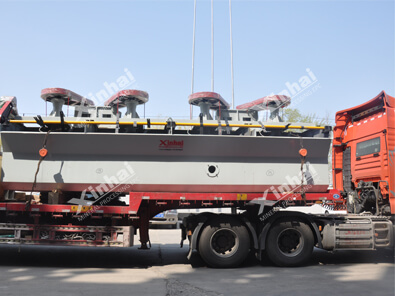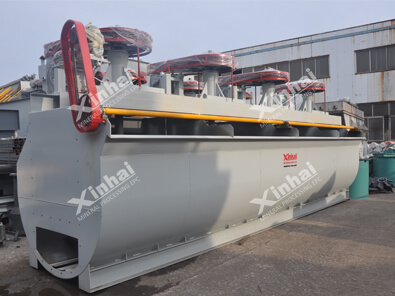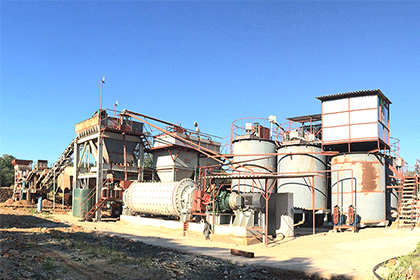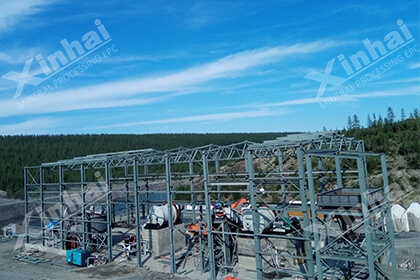How to Extract Tungsten from Ore?
 Shirley
Shirley
 Jul 30, 2022
Jul 30, 2022
 1812
1812
If you want to know more details about equipment, solutions, etc, please click the button below for free consultation, or leave your requirements!

(Tungsten flotation plant)
Tungsten is a rare metal, which is widely distributed and exists in almost all kinds of rocks. Because of its low content, it can only be enriched through relevant geological processes before forming ore deposits for mining. There are more than 20 kinds of tungsten ore found in nature.
Due to the differences in the properties of wolframite and scheelite ore, the beneficiation process is different.
01 Wolframite Mineral Processing Technology
BackFor the wolframite or wolframite-based ore, the mineral processing technology generally consists of the following parts: crushing and pre-discarding to obtain the qualified ore in advance; gravity separation to discard the tailings and obtain the rough concentrate; separation and comprehensive recovery of rough concentrate to obtain the final concentrate; Fine mud treatment. Usually, the qualified wolframite concentrate products are obtained after a variety of mineral processing technologies.
(1) Hand picking process
Hand picking is a pre-enrichment method of wolframite, and is an indispensable part of wolframite mineral processing technology. The backhand host picking means to separate the waste rock from the raw ore. The forehand host picking means to separate the qualified tungsten ore from the raw ore.
(2) Gravity separation
The gravity separation process of wolframite can be divided into jigging separation and shaking table separation. Generally, the jigging separation is used for roughing, and the shaking table separation is used for concentration.
Jigging separation
It is generally adopts three-stage jigging. All qualified ores are screened into three levels of course, medium and fine size, and then sent to the jigging operation. The upper limit of coarse-grained size is 13 mm, generally 8 mm-10 mm. The range of medium-grained size is 1.5-5 mm. The coarse and medium-grained jigging tailings are reground and reseparated, and the recovery rate of coarse and medium-grained jigging operation can reach 65 % -75 %.
Shaking table separation
Before entering the shaking table separation, the wolframite is graded into the narrow size, which can guarantee the range of feed particle-size.

(3) Magnetic separation process
Wolframite often contains scheerite, tinstone, molybdenite, bismuthinite, pyrite, chalcopyrite, sphalerite, which need to be separated from the wolframite by concentration operation. The concentration operation can adopt the magnetic separation process and dry magnetic separator to obtain the qualified wolframite concentrate in the range of 0.074-3mm.
(4) Table flotation process
Table flotation process is an important wolframite mineral processing technology, which means the gravity separation and flotation are adopted simultaneously on the same equipment (shaking table). Table flotation process can achieve the floating separation of easy-to-float sulfide and other minerals in the case of coarse particles, and the minerals with different specific gravity can also be separated on the bed surface. Usually, the particle size range of table flotation process is 0.2-3mm.
02 Scheelite Mineral Processing Technology
BackAccording to the ore disseminated characteristics, the scheelite mineral processing technologies mainly include gravity separation process, gravity separation + flotation process and single flotation process.
(1) Gravity separation process
It mostly adopts the gravity separation process to deal with coarse disseminated scheelite, and the gravity separation equipment mainly includes spiral chute, shaking table, centrifugal separator. Because the scheelite is brittle and easy to slime in grinding, it should be recovered at a coarse grinding size as far as possible under the condition that the monomer is dissociated basically. Or the stage grinding and stage separation are adopted to fully recover the gradually dissociated scheelite, but the gravity separation effect of fine scheelite will be significantly worse. Since the uneven grinding products are produced in the grinding process, and the fine-grained products are not suitable for gravity separation, the flotation method can be used to recover the fine-grained scheelite.
(2) Flotation Process
The scheelite deposit is often associated with molybdenum, copper, bismuth, iron, lead and zinc, which have the better inherent floatability than the scheelite, and have the comprehensive recycling value. If not recycled, they will influence the scheelite flotation, and decrease the scheelite concentrate grade. Therefore, it generally adopts the sulphide ore flotation - scheelite flotation process.

03 Wolframite and Scheelite Mineral Processing Technology
BackThe mineral processing technology of wolframite and scheelite mostly adopts the combined process. Because the ore density of wolframite and scheelite are higher than that of gangue minerals, the mixed concentrate can be obtained by the gravity separation process. Then, since the floatability of wolframite is weaker than scheelite, the fatty acid collector can be used to separate the scheelite from the mixed concentrate.

04 Tungsten Mineral Processing Cases
Back(1) Mongolia 500tpd Tungsten Mineral Processing Plant
The metallic minerals of the project were mainly wolframite, pyrite, limonite, sphalerite, and chalcopyrite; the non-metallic minerals were mainly quartz. This plant adopted two-stage and one closed-circuit crushing and screening - one-stage grinding and grading - desliming gravity separation - magnetic separation - tailings dehydration process. The grade of first-class tungsten concentrates was 65.3%, the yield was 0.88%, and the recovery rate was 72.74%. The grade of the secondary tungsten concentrate was 15.3%, the yield was 0.26%, and the recovery rate was 5.03%.
(2) Mongolia 150tpd Tungsten Mineral Processing Plant
The raw ore was tungsten ore with a WO3 grade of about 7% which was ≤200mm in size and had medium hardness. The slime and water contents were both smaller than 6%. The grinding fineness was -1mm because tungsten was not liberalized in the fraction of over 1mm. This project adopted crushing-grinding, gravity separation-classifying, gravity separation-tailings dry stacking process. The product was tungsten concentrates which had a water content of ≤3%. After dewatering, tailings had a water content of 15-20% and were transported outside for dry stacking. The water from dewatering was recycled.

(3) Russia Tungsten and Tin Mineral Processing Test
The metallic minerals of the project were mainly pyrite, chalcopyrite, sphalerite, wolframite, galena, cassiterite, etc., and the non-metallic minerals mainly included quartz, calcite, mica, etc. The ore contained 2.35% tungsten and 0.26% tin. The tungsten was a valuable element that can be recovered, and other valuable metals (such as tin, silver, copper, lead and zinc) were recovered comprehensively. After the comparison of various schemes, classifying and gravity separation of raw ore + concentrate flotation, desulfurization and classifying gravity separation of raw ore + concentrate magnetic separation were adopted to recover tungsten.
(4) Kazakhstan Tungsten and Molybdenum Mineral Processing Test
The ore of this project can be divided into powder sample and core sample, the WO3 grade of core sample was 0.21%. The ore sample in this test was the core sample and the scheelite was the main recovery object. Finally, priority sulfur removal flotation- regrinding and heating concentration of coarse concentrate process was adopted. Finally, the concentrate yield was 0.27%, the grade was 54.32% and the recovery rate was 77.15%.

05To Wrap Up
BackThe above are the tungsten ore processing technologies and processing cases. If you have other questions, you can leave your message here or contact the online service, we will contact you soon.
 +86 18716000713
+86 18716000713 xlyin@xinhaimining.net
xlyin@xinhaimining.net




 Message
Message Chat Now
Chat Now




















